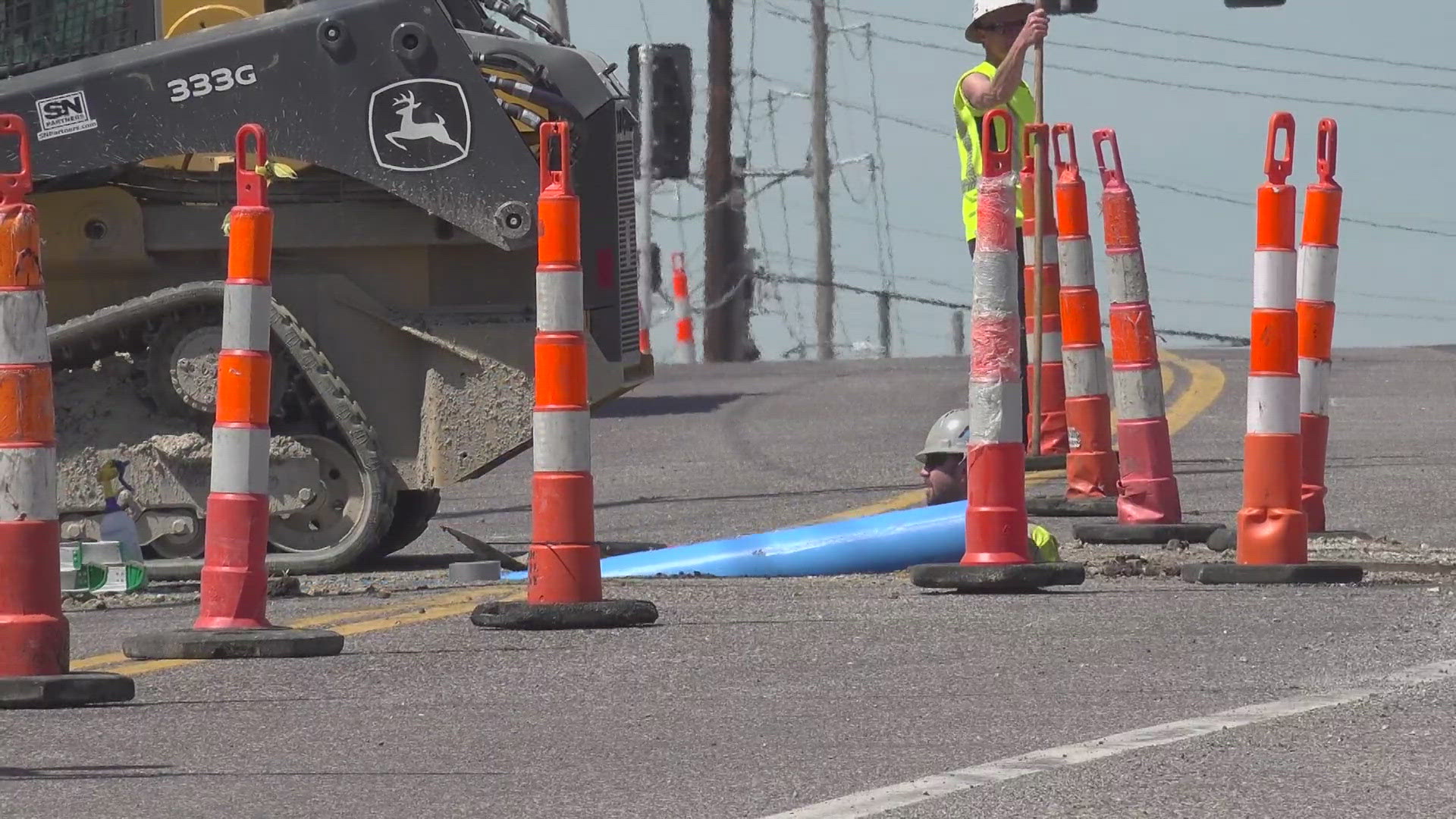ST. CHARLES COUNTY, Mo. - Like many interstate-bearing bridges in the bi-state, the Daniel Boone Bridge is comprised of two bridges in order to carry both directions of high volume traffic especially during rush hour. But, the pair of bridges collectively known as the Boone Bridge is somewhat unique because it was piecemealed together over time.
From the early 1930s to the late 1980s, the Boone Bridge was a small, two-lane carrier of both east and westbound traffic, meaning one lane east and one lane west. In 1989, as the population grew in St. Charles County, the Missouri Department of Transportation opened a second bridge upstream of the 1930s bridge. It carried eastbound traffic while the then-50-something-year-old bridge was restriped from two lanes to three in order to handle all westbound traffic.
This brings our story to the present day. At three lanes, the 1930s bridge isn't big enough to handle the evening rush hour back into St. Charles County from Chesterfield. Plus, those three lanes are only 10 feet wide compared to the standard 12-foot interstate lanes, making an intimidating trip for many. MoDOT allotted $125 million to construct a new bridge upstream of the existing two. The new bridge is designated to carry eastbound traffic upon completion by late spring 2015. It will have four 12-foot lanes with wide 10-foot shoulders and is expandable to five lanes.
MoDOT Project Director Jim Gremaud says there's a bonus.
"This new bridge has a shared use path that is protected from traffic, 10-foot wide, that will connect to the Katy Trail in St. Charles County and the Monarch Levy Trail in St. Louis County. So pedestrians and bicyclists will have easy access across the river now. So, that's been a great part of the project," said Gremaud.
He has overseen the project from the start and says it had a big setback.
"We had some issues out in the river where we encountered some debris that was left in the river from when they constructed the 1980s bridge. And it caused us several weeks of delay and additional work," said Gremaud. He said there were steel pilings and boulders in the river, so as crews went to lay the foundation for the new bridge, they sat on the sidelines for several weeks while the old debris was remediated.
"We had hoped to get the new eastbound bridge open to traffic this year. The plan now is to have that new eastbound bridge open to traffic in late spring of 2015," said Gremaud. "But, we still intend to have the westbound traffic on the 1980s bridge by late 2015. And that's always kind of been our goal."
That's because once eastbound traffic is off the 1980s bridge, preparation to ready the bridge for westbound traffic will not require much turn around.
So what can you expect going forward? Except for lane shifts, there will be little impact to traffic for both directions of travel. In fact, Gremaud says it should be smooth sailing for both drivers and construction crews.
"We've got all the substructure in and done. And we're working on the superstructure part of the bridge now. And that's really all of the steel girders and getting the driving surface in. So we're really going full steam ahead," said Gremaud.
The project is running within one percent of budget of its $125 million budget. And that old 1930s bridge? It would require $30-40 million to bring back up to speed, so it is set for demolition in 2016.

